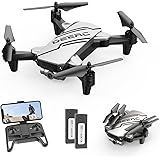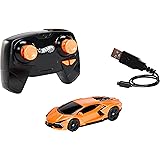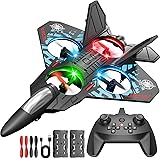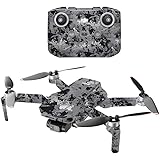Have you ever wished for an aerial video solution that combines the best of both worlds: the extended flight times of a fixed-wing aircraft with the vertical takeoff and landing convenience of a multi-rotor drone? Many RC enthusiasts and videographers face this exact challenge. The traditional limitations of requiring a runway or sacrificing endurance for maneuverability can be frustrating. However, as showcased in the video above, the **Foxtech H-wing VTOL** emerges as an innovative answer, promising an easy-to-fly, long-range RC aerial video solution that aims to redefine aerial capture.
This remarkable piece of drone technology eliminates the need for vast open spaces or runways. It effortlessly lifts off the ground like a drone, then transitions into efficient horizontal flight akin to a traditional airplane. This unique capability is not just about convenience; it dramatically boosts efficiency and flight duration, opening up new possibilities for aerial surveying, mapping, and cinematic shots.
Understanding VTOL Technology: Bridging the Gap
VTOL stands for Vertical Take-Off and Landing. This technology allows aircraft to ascend and descend vertically, similar to a helicopter. Once airborne, a VTOL aircraft like the **H-wing VTOL** can then transition to forward flight, utilizing wings for lift and efficiency, much like a conventional airplane. This hybrid design offers significant advantages:
- No Runway Required: You can launch and land from almost anywhere, from a small field to a confined urban space.
- Extended Endurance: Fixed-wing flight is inherently more energy-efficient than hovering. This allows for significantly longer missions and greater range compared to traditional multi-rotor drones.
- Versatility: It handles both precision hovering (for detailed shots or launches) and swift, long-distance travel.
Key Features of the Foxtech H-wing VTOL for Aerial Videography
The **Foxtech H-wing VTOL** is packed with features designed for ease of use and high performance, making it an excellent choice for beginner and intermediate pilots alike. Let’s delve into what makes this aerial platform stand out.
Ready-to-Fly (RTF) and Portable Design
Upon unboxing, you’ll find everything you need to get airborne. The H-wing comes in its own carry case, housing the aircraft, transmitter, flight battery, charger, and all necessary leads. This means less time hunting for compatible accessories and more time flying. Its portability ensures you can take your aerial video solution wherever your projects lead.
Modular Airframe for Rapid Assembly
One of the most impressive aspects is the quick assembly process. The H-wing features a light, modular airframe that can be put together in minutes. There are no tools needed, no messy wiring to sort out, and no complicated connection procedures. Components simply slide on, making electrical connections automatically. This design significantly reduces setup time, allowing pilots to get into the air faster and focus on the flight itself.
Advanced Navigation with GPS Integration
GPS is a cornerstone of the H-wing’s intelligent flight capabilities. It provides essential functions for a safe and controlled flight experience. This includes precise position hold, ensuring the drone remains stable even in light winds. The return to home (RTH) feature automatically brings the aircraft back to its launch point in case of signal loss or low battery. For more advanced users, flight path planning with waypoints can be defined via a dedicated app, allowing for automated and repeatable missions. Beginners also benefit from a simpler app for general hands-on flying.
Integrated FPV and Long-Range Transmission
An onboard 720p 24 frames-per-second FPV (First Person View) camera provides a real-time view directly to the transmitter and your smartphone app. This integrated system operates on a 2.4 GHz video, data, and RC transmission, offering an impressive maximum operational range of 10 kilometers. This range capability is crucial for covering large areas or conducting long-distance inspections.
Action Camera Compatibility for High-Quality Footage
While the integrated FPV camera is great for piloting, the **H-wing VTOL** also supports popular action cameras like the DJI Osmo and GoPro. You can easily remove a foam insert at the front and secure your preferred action camera with a velcro strap. This flexibility allows pilots to capture professional-grade aerial footage with their existing high-quality cameras.
Unique Control System for Stable Video
Unlike many fixed-wing aircraft, the H-wing boasts no traditional control surfaces such as ailerons or elevons. This design choice offers two key benefits. First, it eliminates the risk of damage to moving parts, which are often vulnerable during landings or unexpected incidents. Second, the H-wing uses a differential steering mechanism for yaw control. This means it changes direction by varying the thrust of its motors, rather than tilting the entire airframe. The result is captured FPV and action camera images that remain remarkably flat and stable at all times, providing smooth, cinematic footage.
Impressive Flight Performance and Endurance
The **Foxtech H-wing VTOL** delivers substantial performance metrics. It has a maximum tested flying range of 25 kilometers, achieved when taking off to 50 meters altitude and flying continuously in zero wind conditions. Its maximum fixed-wing flight endurance is an impressive 40 minutes. For multi-rotor (hover) flight, the endurance is around 18 minutes. These figures highlight the significant advantage of its hybrid design for extended aerial operations.
Integrated Safety and Failsafe Mechanisms
Safety is paramount with any aerial platform. The H-wing includes several emergency failsafe mechanisms. In the event of low voltage on the main flight battery or a loss of signal between the transmitter and the H-wing, the aircraft will automatically initiate a return to home procedure. Additionally, it incorporates stall protection, detecting and correcting potential stall conditions to maintain flight stability and prevent crashes.
Assembling Your H-wing VTOL: A Step-by-Step Guide
Getting the Foxtech H-wing into the air is a straightforward process, designed for quick setup. Here’s how assembly typically unfolds:
- Unpack the Fuselage: Carefully remove the main fuselage from its carry case.
- Connect the Battery (Initial): Take off the battery compartment cover and connect the flight battery. This initial connection allows the onboard positioning system to acquire a GPS signal from satellites, helping the H-wing understand its location.
- App Check: Launch the HEQ app on your smartphone (Android is supported) to verify the FPV camera is working and that GPS satellite position has been acquired.
- Disconnect for Safety: Disconnect and remove the battery to safely complete the rest of the assembly.
- Attach VTOL Arms: Slide the VTOL arms onto the sides of the fuselage. These feature electrical connections that automatically mate, requiring no bolts or complex procedures. It’s a simple, friction-fit design.
- Install Propellers: Attach the propellers. They typically have silver or black spinners to indicate their correct placement based on motor rotation. They are often self-tightening, so excessive force isn’t needed.
- Connect Winglets: Slide the winglets onto the VTOL arms. These usually click and lock into position securely.
- Final Battery Connection: Reconnect the flight battery, tucking away the leads. Replace the battery compartment cover, which often uses strong magnets for secure closure.
Once assembled, the **H-wing VTOL** is ready for its pre-flight checks and calibration.
Calibration for a Smooth First Flight
Before launching your H-wing, two crucial calibration tasks ensure optimal performance and safety:
GPS Calibration
This three-step process helps the H-wing accurately determine its orientation and position. The app guides you through each step and confirms completion automatically:
- Step 1: Nose Up Rotation: Hold the H-wing with its nose pointing upwards and rotate it around three times.
- Step 2: Flat Rotation: Hold the H-wing flat and level, then rotate it around three times.
- Step 3: Side Rotation: Hold the H-wing on its side and rotate it around three times.
Air Speed Sensor Calibration
Calibrating the airspeed sensor is also a simple two-step process:
- Step 1: Block Inlet: Block the airspeed sensor inlet until the app detects completion.
- Step 2: Blow into Inlet: Blow into the airspeed sensor inlet until the app confirms this step is complete.
After these calibrations, your **Foxtech H-wing VTOL** is ready for its maiden flight.
Taking Flight with the Foxtech H-wing
With all pre-flight checks complete, it’s time to experience the H-wing in action. Always ensure you are in a safe, open area, away from buildings and people. To arm the aircraft, pull the left stick on the transmitter to the bottom right corner. Then, a simple push of the left stick upwards initiates takeoff.
During flight, your smartphone app displays crucial telemetry data, including airspeed, ground speed, distance from home, total distance flown, and altitude. The FPV image is visible in the bottom left of the screen, which you can tap to expand for a larger view. The H-wing starts in hovering mode, perfect for vertical ascent. To transition to fixed-wing flight mode, simply press button ‘A’ on the transmitter. You can switch between hover and flight mode at any time with this button.
Steering in fixed-wing mode is intuitive, typically controlled with the right stick for left or right turns. When you’re ready to conclude your flight, pressing button ‘B’ initiates the automatic return to home and landing sequence. If necessary, you can press ‘B’ again to abandon the automatic landing and manually guide the H-wing away from obstacles for a manual landing. This aerial video solution provides both ease of control and robust safety features, making it a reliable platform for your aerial needs.











